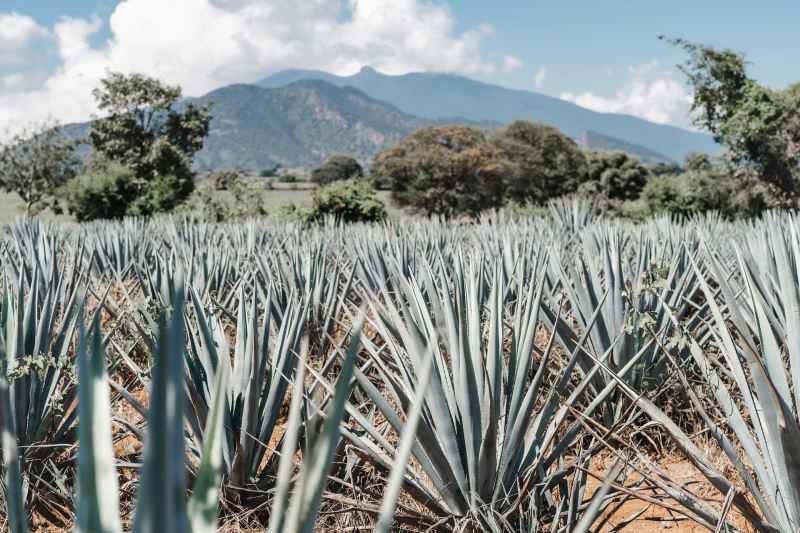The arc of agave spirits is a pretty involved one. In just the last decade alone, we’ve seen a rise in the popularity of not just tequila and mezcal, but also liquids, like sotol and bacanora. The next big agave spirit type? Well, it’s more of a wine.
Ola Sol borrows more from the wine world, a fermented agave product that does not get distilled. In the end, it’s a lighter take on tequila, made from the same base ingredient but in a less concentrated, lower-octane format. And it might just be the latest breakthrough in a crowded agave drinks arena.
The impetus

Co-founder of Ola Sol, Alexis Beechen, has a relatable story. She likes tequila but doesn’t always love the aftereffects. “Agave wine tastes like tequila, but because it’s fermented, not distilled, the result is lighter and smoother,” she said. “It’s also half the calories and alcohol, so you can enjoy a drink and feel good the next day.”
One could say the timing is just about perfect as well, with the needle moving toward lower-alcohol drink options. “We created Ola Sol initially for ourselves but quickly realized that almost everyone, from baby boomers to Gen Z, wants to drink better these days, meaning having fewer, higher-quality drinks.”
Very much the product of its West Coast upbringing, Ola Sol is out to appeal to those with health and wellness in mind. It’s the kind of thing you could sip on at the beach or by the pool during the afternoon and still be able to fully function that evening. The label officially dropped last fall, and it’s been gaining traction ever since.
A different process

“Agave wine is very close to tequila,” Beechen explained. “We both use 100% blue weber agave from Jalisco, Mexico. All tequila is fermented before it’s distilled, but to make Ola Sol, we finely filter after we ferment and then add our own agave brandy to fortify the wine to 24% ABV.”
The result is decidedly a clean and easy-drinking experience. While there’s nothing overly complex about the aromatics or flavor, there’s no denying the evenness of the agave wine and how easily it could be plugged into a more session-able Paloma or other south-of-the-border-inspired cocktail. There’s a mild grape-y-ness likely due to the addition of brandy, but no sizzle of alcoholic heat, like you might get from a tequila spirit.
How should one drink it? Neat and straight out of the fridge is perfectly acceptable. “One of the wonderful things about agave wine is its versatility,” Beechen said. “It’s smooth enough to enjoy on the rocks with a twist of lime, but you can also create a sangria with it, or use it in your favorite agave cocktail recipe for a low-ABV alternative.”
Staying ahead

The drink itself is a pretty savvy one, given the backdrop of still-buzzing agave spirits and trending lower-alcohol options. But starting a brand is never a cakewalk, especially in the midst of tariffs and other economic hindrances.
“There are so many things outside of your control when starting a brand, but we made sure to get ahead of the potential tariffs,” she said. “We’ve been working closely with our production partners in Mexico to produce ahead of the summer season and bring some product over the border before the tariffs go into effect.”
Beechen said the tariffs will especially hurt not just brands, but also local bars and restaurants. But there’s a lot of momentum with this particular product, especially due to its hybrid nature of sorts. As Beechen is keen to point out, there are scores of establishments working with beer and wine licenses, as opposed to liquor licenses. Because Ola Sol is more like wine with its lower alcohol content, bars and restaurants can take advantage of their preexisting permits and bring agave wine on board. And once it’s on the list, it can be mixed like a spirit, adding to the versatility factor mentioned before.
The brand is young, and there’s much to look forward to, including expanding into new markets. It would be fun to see different takes on the agave wine style down the road, perhaps made with different agave species per a mezcal or treated to different barrel-aging lengths.
For now, Ola Sol is an interesting new addition to a market that just can’t get enough agave. We’re guessing others like it will join the fray, assuming an unpredictable economy doesn’t get in the way. Will we see similar products from other traditional spirits looking to appeal to a broader audience? That just might be a trend to look out for later this year.
If agave is your thing, check out related features, such as our guide to sotol and pro-approved mezcals for sipping at home. In the mood for mixing? Then head over to The Manual’s classic tequila cocktails piece for some inspiration (and recipes).



